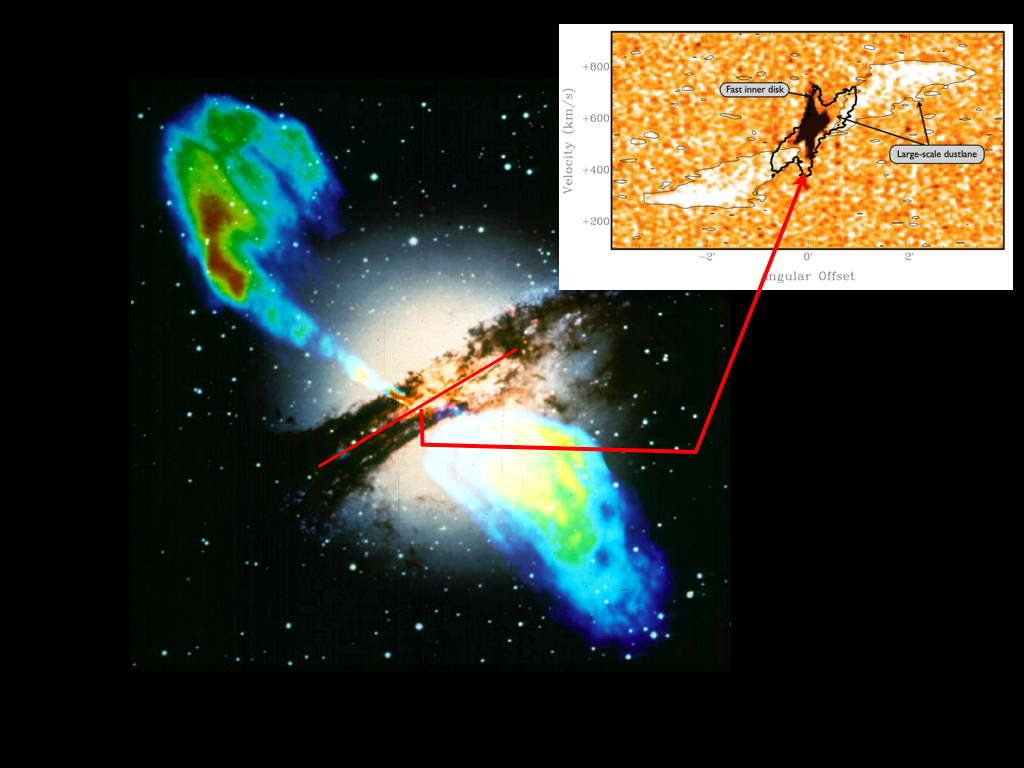Daily Image
06-08-2008What is feeding the monster in Centaurus A?
| Submitter: | Raffaella Morganti |
| Description: | Astronomers do not know yet what makes a super-massive black hole able to produce the huge jets of relativistic plasma that we observe at radio wavelengths in many galaxies. One possibility is that cold gas falls into the black-hole and is converted in energy. Clues that this might be happening are thought to be seen in a number of radio galaxies. One of the most impressive examples for such infall was Centaurus A, the closest radio-loud active galactic nucleus. However, new and deeper observations, performed with the Australia Telescope Compact Array, of the HI absorption in the central regions of Centaurus A have shown that the observations have to be interpreted in a different way. These observations are extremely difficult because Cen A is one of the brightest sources in the radio sky and to detect he absorption, one needs to achieve a very high spectral dynamic range (of the order of 10^5). The figure shows an optical image of this famous galaxy: the dust lane obscuring the nucleus at optical wavelengths is clearly seen. Superimposed (in colours) is the inner part of the radio emission from Centaurus A. In the right-top corner is the so-called position-velocity diagram of the neutral hydrogen detected in the new observations along the dust lane (with the HI emission in white and the HI absorption in black). The thick black contour represents the molecular gas (CO) detected some years ago with the JCMT. In previous observations only absorption of gas moving towards the centre was detected in Cen A, hence the idea that this could be due to infall. However, the new observations show that also some cold gas is moving away from the nucleus and cannot be infalling. In fact, with the new data it seems that the kinematics of the HI in the inner regions of Cen A is very similar to that observed in emission for the molecular circumnuclear disk. This suggests that the central HI absorption is not, as was previously claimed, evidence of gas infall into the AGN, but instead is due to a disk of cold gas, nicely rotating around the centre of Cen A. Altough it is a bit of a disappointment that we do not see the direct fuelling of the active nucleus, this result is nevertheless very interesting. It is telling us about the structure of the nuclear regions of active galaxies. This result has been presented in a paper published in Astronomy & Astrophysics "A circumnuclear disk of atomic hydrogen in Centaurus A" by Morganti, R.; Oosterloo, T.; Struve, C.; Saripalli, L. http://arxiv.org/abs/0805.1627). |
| Copyright: | ASTRON |
| Tweet |  |
